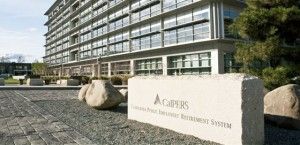No, the recession is not to blame for the pension crisis
July 5, 2013
By Chris Reed
Perhaps the single smartest guy in the Schwarzenegger administration, David Crane, continues to be a wrecking ball when it comes to the arguments offered by apologists for California’s ruinous state finances. In his latest Bloomberg News column, Crane takes on the defenders of the status quo who try to reframe the narrative by saying pension funds aren’t underfunded because benefits are ridiculously generous, it’s because of Larger Economic Factors That Came Out Of Nowhere.
“The reason for rising pension costs has nothing to do with the recession or short-term declines on Wall Street. Public pension costs are increasing simply because liabilities are growing faster than assets.

“Calpers is a good example. As an intermediary that administers pension promises made by the state of California and other public-sector employers to their employees, it collects contributions from employers and employees, invests those funds to generate earnings, and uses the proceeds to pay benefits to retired employees.
“In 2007, Calpers reported that the pension liabilities of its largest pool of employers totaled $248 billion. By 2011, just four years later, those liabilities had grown 32 percent, to $328 billion. That rapid growth happens because pension liabilities grow (‘accrete’) at the rate used to discount those obligations to present value, which at Calpers is a very high 7.5 percent per year. Pension assets must grow at that “hurdle” rate or pension costs rise. For example, to meet the rate at which pension liabilities were increasing in 2007, Calpers needed the Dow to reach 20,000 by now. Because it is at 75 percent of that level, pension costs must rise to make up the difference.
“This isn’t a new phenomenon. To meet the rate at which pension liabilities were growing in 1999, Calpers needed the Dow to reach 30,000 by now. Because it is half that level, California has spent $20 billion more on public pensions than would have been the case had pension assets grown at the hurdle rate.”
Projecting Dow at 30,000 epitomizes insanity of 1999
In key ways, 1999 was the year that brought the pension tsunami more toward shore than in any other year. That’s when CalPERS lobbied for a retroactive 50 percent increase in pensions for state employees, triggering a wave of giveaways by local governments who were encouraged by CalPERS’ insane claim that it would be easy to fund the much more expensive benefits.
What was driving that assumption? As Crane notes, the idea that the Dow Jones Industrial Average would be at 30,000 this year. Nothing epitomizes the civic arson committed by CalPERS in 1999 better than that ridiculous factoid.
Related Articles
At Last, California Ties Texas
Wayne Lusvardi: It seems that, since 2006 when the University of Texas Longhorns football team beat USC in the Rose
Amid Capitol’s gift extravagance, Gatto sets standard for ethics
Mike Gatto’s life is an open book. Last January, his daughter, Evangelina, received a $50 gift certificate from a family
‘Jungle primary’ effects could doom AB32’s renewal
California’s shift to “jungle primaries” in which the top two candidates advance regardless of party hasn’t resulted in significant changes




